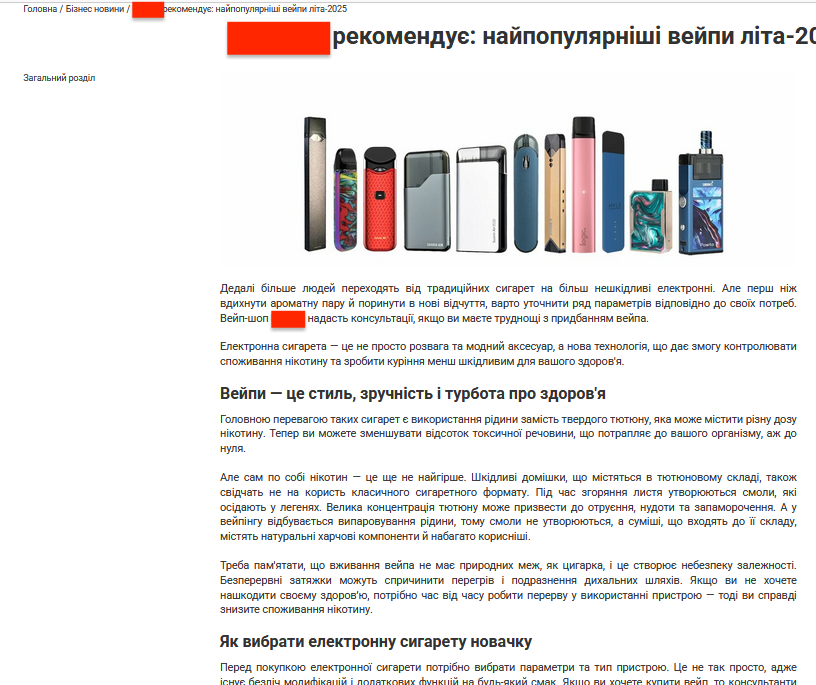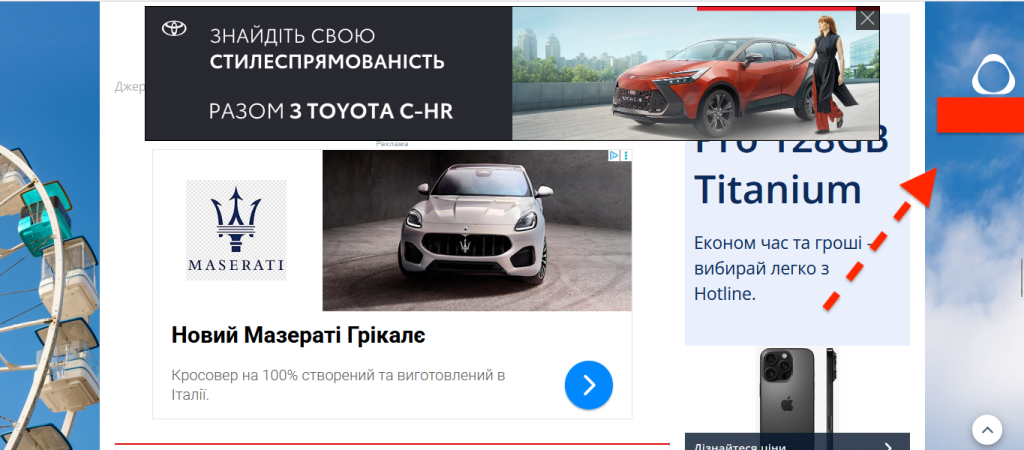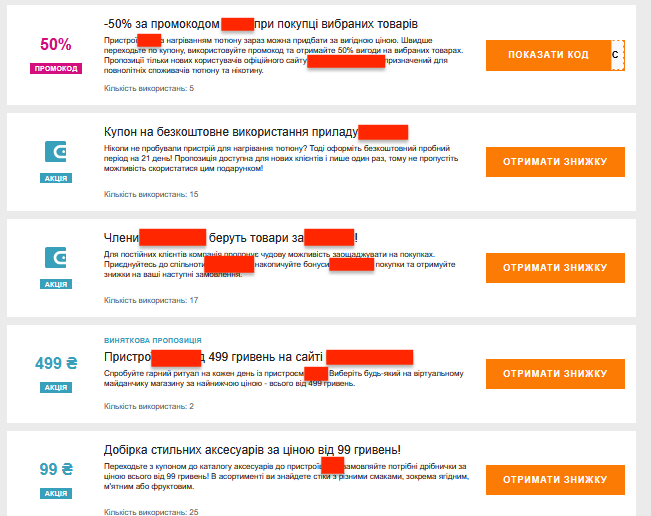In May 2025, the Centre for Democracy and Rule of Law conducted monitoring of Ukrainian websites to identify violations of the current anti-tobacco legislation – namely, internet advertising of tobacco or nicotine products, smokeless tobacco products, etc.
The monitoring covered 30 Ukrainian websites of sports, news, entertainment, regional, and commercial focus, where various types of internet advertising prohibited under the Anti-Tobacco Law No. 2899 and the Law of Ukraine “On Advertising” were recorded.
The types of online advertising whose “claws” seek to hold onto current smokers and capture the attention of very young consumers:
- Native Advertising
This includes online articles that do not contain direct calls to purchase tobacco or nicotine products but promote narratives that create a positive attitude toward branded manufacturers or smoking in general.

- Banner Advertising
This includes colorful graphic (often animated) images of tobacco manufacturer brands appearing in different parts of a webpage on websites unrelated to the production or sale of tobacco or nicotine. Such ads are intended to attract users’ attention to these brands.
- Virtual Product Display
This includes the placement of photos of tobacco or nicotine products/devices using graphic or informational features in these photos. Its goal is to create brand-associated imagery or to appeal to consumers’ at marketplaces using eye candy effect.
- Chatbots
In particular, the placement of interfaces for interaction between computer software (AI) and a human in messaging apps, featuring informational and graphic offers of tobacco or nicotine products without proper age verification of the user. As a result, such products become accessible to children and adolescents.
- Discounts, Promo Codes, Bonuses
This includes posting promo codes on websites to purchase tobacco or nicotine devices at a price lower than the established one. As well as the dissemination of offers to use discounts or the publication of instructions for earning bonus points for the purchase of such tobacco or nicotine devices, which can later be used for another round of purchasing these products.

The scale of internet advertising problem is also confirmed by a sociological survey conducted by the Kyiv International Institute of Sociology, which shows that 75% of young people aged 18-29 are exposed to advertising of tobacco products (including heated tobacco products) or related devices.
And the actual leader among the places where such legally prohibited advertising is distributed is the Internet itself – 27.1% (with a higher percentage only at the points of sale – 30.3%).
58.8% of young people aged 18-29 have noticed advertising of tobacco products (including heated tobacco products) or devices online.
The KIIS data also confirm a pressing issue: young people aged 18–29 are most exposed to banner ads on the internet.
Overall, the monitoring highlighted poor compliance with anti-tobacco laws online. Internet users, especially youth, are systematically exposed to information that is part of the tobacco industry’s advertising strategy aimed at attracting new consumers.
This issue can be addressed by Draft Law No. 12091, registered in the Verkhovna Rada of Ukraine, which eliminates the current exceptions regarding the online advertising of tobacco and nicotine brands.